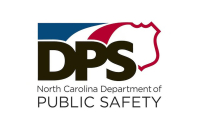Builders fear slope rules aimed at safety could drive up costs
“No one so far has explained why we need this thing,” said Paul Higdon, a contractor who oversees sewer, water and septic projects. “Other than it’s just another level of bureaucracy that private landowners have to go through.”
But Lewis Penland, the planning board’s chair, has billed the ordinance as a way to protect lives and property from slope failures.
“We’ve got to have development,” said Penland. “All I ask is that when you build something above me, it doesn’t fall down on me.”
Penland, who works as a developer and grading contractor, also backs steep slope rules as a way to level the playing field between the contractors with scruples versus the ones who cut corners and can offer cheaper rates as a result.
“The way the system is set up now, you’re punishing the people who are doing it right,” Penland said.
Higdon is no stranger to regulation, having worked as Macon County’s environmental supervisor for 10 years. But he believes the county’s erosion control and subdivision ordinances already put enough restrictions on developers even though they don’t deal directly with mountainside construction.
Related Items
“My concern is in a down economy –– a construction-based economy –– it will inhibit it that much more,” Higdon said.
Higdon also fears that landslide hazard maps, developed by the North Carolina Geological Survey, will become material facts that must be disclosed during land transactions, forcing Realtors to inform potential buyers if a house or lot lies in a landslide hazard area.
Higdon thinks the maps may open the door to more litigation on the one hand or lower property values on the other.
What role the newly created landslide hazard maps should play in steep slope regulations has proved controversial. The maps were created in the wake of the Peek’s Creek landslide that killed five people in Macon County in 2005.
“We’ve got to educate people on the maps,” Penland said.
But advocates of the slope rules aren’t stopping there.
The planning board has launched an education campaign in which its members will travel to communities around the county to educate people about the proposed regulations.
Some citizens have already joined the discussion. Last month, 12 people came to a planning board meeting to voice their reservations.
Bill Vernon, a retired developer who created the Featherstone subdivision in 2002, is another critic of the proposed elements of the ordinance. He thinks the engineering fees the ordinance requires in certain cases would prohibit development.
“The big issue I see is what will it will do to construction,” Vernon said.
He disputes the planning board’s estimates that engineering fees could range from $500 to $8,000 for projects that occur on slopes of a 30 percent grade or more, estimating instead that costs could climb to $20,000 on a house.
“If you’re going to add $8,000 to the cost of a building in this economic environment, I’m against it,” Vernon said. “I’m against it if it’s $20.”
Steep slope committee member Reggie Holland is president of the Macon County Homebuilders Association. Holland doesn’t think the steep slope ordinance will hurt his trade.
“I really don’t think this is going to be so significant an expense that it would cause people not to buy here,” Holland said, adding most buyers would want their home to comply with the cut and fill and soil compaction requirements.
For Holland, who changed his mind about the regulations during a year of slope committee meetings, the ordinance speaks for itself.
“When I was first on this committee, I felt similarly to Paul and Bill, thinking we didn’t need another government program to intervene in the work we’re doing,” Holland said. “The more I investigated it and thought about some jobs in the past where there were failures, I really thought there needed to be some standards.”
Penland said the development of the actual ordinance will take some time and he doubted if the commissioners would take the issue up before the November election. Between now and then, he hopes to turn doubters into supporters through a series of community meetings.
Holland doesn’t think the sell job will be a tough one.
“I think most people who are against the ordinance –– not all of them –– are people who haven’t really read it,” Holland said.
The Macon County Planning Board will hold its next meeting at 5 p.m. on Thursday, July 15, at the Pine Grove Community Center.
Macon slope rules in the works
In April, the Macon County Board of Commissioners charged the planning board with the job of drafting an ordinance that would regulate development on steep slopes. The directive came after the planning board’s steep slope committee had spent the better part of a year creating a set of guiding principles for the ordinance.
Below are the key elements of the committee’s recommendations.
For any development on slopes over 30 percent grade:
- Cut slopes over 8 feet in vertical height cannot be steeper than a 1.5:1 ratio.
- Fill slopes over 5 feet in vertical height cannot be steeper than 2:1.
- No cut-and-fill slope can exceed 30 vertical feet.
- Fill must be compacted and cannot contain stumps and logs.
- 30-foot setback from streams.
On slopes greater than 40 percent, developer must hire an engineer or design professional to create a slope plan. An engineer is also required on slopes greater than 30 percent if they lie in high or moderate landslide hazard areas.
For development on slopes between 30 and 40 percent grade, an engineer is not required, but a site plan, showing the areas to be graded, cut and fill heights, and a drainage plan, is required.
The ordinance applies only to the portion of a tract that exceeds the slope threshold, not the entire tract.









